This week we’ll be taking a look at a deep and strategic game where planning and a little luck make all the difference. When playing The Castles of Burgundy, players take various types of tiles and place them into their estates to score the most victory points. The game is marketed for experienced gamers; two to four players can finish the game between one and two hours. Despite its length and high strategic depth, The Castles of Burgundy is a relatively straightforward game to learn. Each player rolls two dice, and then all players take one of four possible actions using the values that they rolled. I’ll show you how these actions come together to help players build their estates, and then I’ll share my thoughts on The Castles of Burgundy.
How to Play
There are two main boards that players need to understand to learn the rules of this game. The first is the individual player boards, where players build their estates. Each player board has several hexagons in various colors, indicating the type of tile that needs to be placed there. The boards are double-sided, so once players have played the game a few times, they can all play with different color patterns. There are also places to store silverlings and worker tiles and references as to what each tile does.
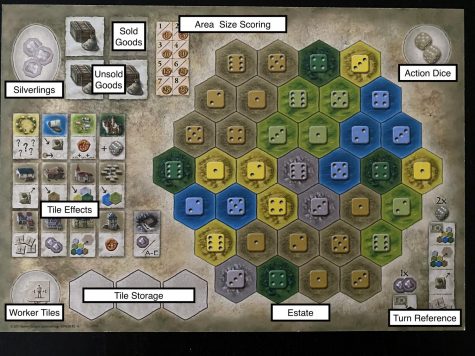
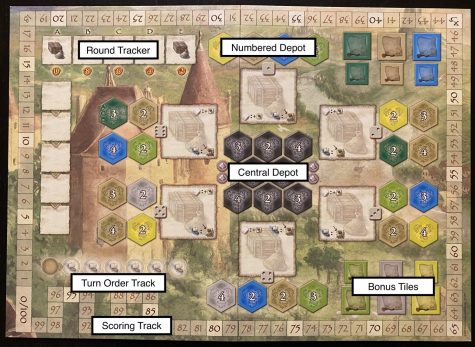
The other board that players should get familiar with is the main board. This is where players will take tiles to add to their estate. There are six sections on the main board for tiles and one special section in the middle. The top left of the main board has five square spaces, labeled from A to E, to keep track of the five game rounds. The vertical column of five squares on the left side of the board tracks the five turns within each round. During each turn, players roll their two dice and one action for each dice, resulting in 50 actions during the entire game.
The four actions that a player can take with their dice are taking worker tiles, taking a tile from the main board, placing a tile that they’ve taken into their estate, or selling goods. For most of these actions, the number on the dice you are using restricts what you can do. In addition to their actions, each player can also purchase one tile from the middle section of the main board each turn by paying two silverlings.
Take Worker Tiles
When you take this action, the number on the dice you use does not matter. You get two worker tiles, which can be spent to change the number on one of your dice. You can change the value on the dice up or down by one for every worker tile spent, and you are allowed to change a value from six to one and vice versa. This action is the least beneficial in scoring more points. Still, it can provide much-needed flexibility for getting the other actions that you need.
Take a Tile
When taking a tile from the main board, a player can take any tile from the section whose number matches the number on the dice they use for this action. The tile that they take is placed on their player board in one of the three storage spaces. If there are no empty storage spaces on your player board, you must discard one tile, so you only have three.
Place a Tile in your Estate
The key to doing well in The Castles of Burgundy is to know when and where to place each kind of tile in your estate. This is the game’s critical action because it clears space in your storage to take more tiles and helps you score points by placing tiles in your estate.
Each hexagon on your player board has a color and a number on it. In order to place a tile, you have to follow some rules. First of all, the value of the dice you use to take this action must match the number on the hexagon where you are placing the tile. Secondly, the tile must be adjacent to at least one previously placed tile. Lastly, the tile you place must be of the same type as the color you are placing it one. If you are placing brown tiles, you also have to ensure that there are no duplicate tiles in each area, contiguous group of brown tiles on your player board.
Whenever you place a tile that completes an area or group of the same colored tiles, you will score points for two things. You will get points for the size of the area, with larger areas providing exponentially more points. You will also get a round bonus based on which round, from A to E, that it is. This bonus starts at 10 points and decreases each round. If you ever fill up all the spaces on your player board of any type, such as all the blue spaces, you get to take a bonus tile if you were first or second to do so.
There are six different types of tiles. Each one has its own placement bonuses and ways for you to earn additional points and benefits. The dark green castles are the simplest type. Whenever you place a castle, you immediately get to take an extra action. For this additional action, you do not use one of your dice and take an action with any number of your choice.
There are eight different brown building tiles that you can place. Your player board has iconography that explains what rewards each building type provides. Some examples of these bonuses include taking a certain kind of tile from the main board, placing a tile in your estate for free, and getting four worker tiles.
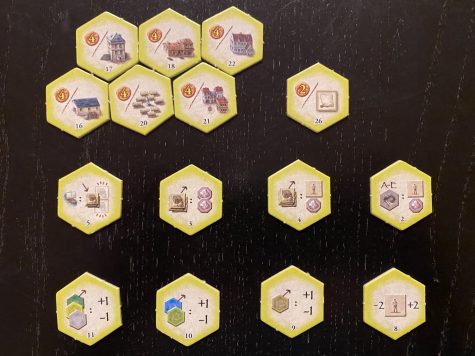
The gray tiles are mines, and they help you get more silverlings. At the end of each of the five rounds, players get one silverling per mine they built in their estate.
Yellow tiles are knowledge tiles that provide a variety of abilities or scoring bonuses. The effects of each tile are explained in the rulebook. Some examples of the knowledge tiles include placing certain kinds of buildings in your estate with a dice value one higher or lower than needed.
The light green tiles have two to four animals on them, which are either all pigs, cows, chickens, or sheep. Whenever you place an animal tile, you will score one point per animal of that type in that area. This means that players should aim to place as many animals of the same type as possible in each light green area in their estate.
The last type of tile is blue ship tiles, which allow players to get ahead in turn order and get goods. When a player places a ship, they’ll move their marker on the turn order track one space. If they land on top of another player’s marker, they will now play before that player, which gives them priority over the tiles they want to take. The first player rolls a white dice in addition to their dice and places a good in the section next to the number they rolled on the white dice.
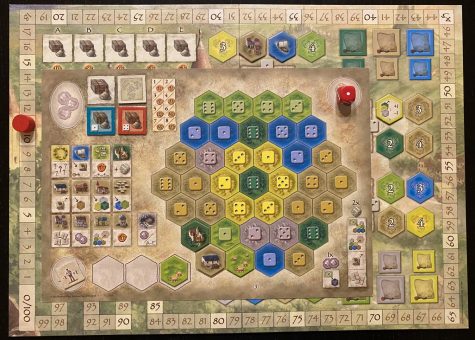
This relates to the ship placement bonus because a player can select one of the numbers on the main board and take all the goods by that number after moving their turn order marker. Players can only have up to three different goods on their player board, but they can make room for more types of goods by selling the ones they have, explained in the next action.
Selling Goods
The last action that a player can take is to sell goods. The six types of goods are each labeled with a number. To sell goods, a player must use a dice with the same number as the type of good they want to sell. They turn over all the goods in that color and place them on their stack of sold goods. They immediately earn points for the sold goods and take one silverling.
When all players have taken five turns during the current round, new tiles are placed on the board, and players earn silverlings for their mines. Then the next round is played. At the end of the fifth round, players add up their points from knowledge tiles and leftover resources. They add those points to the ones they earned during the game from area completion, tile placement bonuses, sold goods, and bonus tiles. After that, the player with the most points is the winner.
Final Thoughts
The Castles of Burgundy is a not a low-scoring game. In fact, players will usually need at least 200 points to be in contention for victory. In getting those points, the game is both strategic and tactical, but most of the long-term strategy is relatively straightforward. The rulebook does not make it a secret that you want to complete as many small areas as you can early to get the higher round bonus and complete the larger areas later on since they are worth more points for their size. This is, of course, based on your player board; some boards have more small or large areas that may require you to focus on certain things first.
Because of the different player boards, the game’s primary strategetic decisions come from figuring out what tiles you need to take and when to place them into your estate. Each of the player boards feels different, forcing you to alter your strategy in order to win.
However, your dice rolls will restrict you and get in the way of what you want to do. Usually, I would wonder why the game would include an obstacle based on luck, but in this game, there are enough factors to mitigate the luck of the dice that it is okay. The first is that you will roll your dice 25 times, so everyone will get some good rolls and some bad rolls. Next, there is an action you can take with every number on the dice; no number is significantly better than another. This means that you might have to do things in a different order or way than you intended to, but you still get to do a decent action. The last thing that mitigates the luck of the dice is the worker tiles, which you can use to modify your dice value to get the number you really need. You can’t do this all the time, but you can do it a few times when you have to get a specific action done, such as completing a large area towards the end of the game.
Let’s move from the strategic viewpoint to the game experience perspective. The game is fun to play, and even if you are not doing well, there are moments where you can pull off a good move and feel a sense of accomplishment. Every time you complete one of your areas, you score points, but you can also see that you are making progress in finishing your estate. One aspect that takes away from the sense of accomplishment is that where you place tiles is predetermined; you don’t always feel like you have ownership over what you did during the game.
That being said, there are going to be frustrating moments in the game. One that most players experience is when they get several lousy rolls in a row. Another game design element that can get players upset is the limited tile availability. Some tile types are rarer than others, but the more common types are not all the same. Even though you may have your eye on a particular tile, someone else who plays before you can snatch that tile on their turn, forcing you to do something else. I find this kind of player interaction acceptable because people typically use what they roll to decide what tile they take. It is more upsetting when someone goes out of their way and uses worker tiles to help them take the tile you want. Besides that, the game doesn’t have too much interaction, so I can’t consider it a mean game.

Your experience does change with the number of players playing. I recommend playing with three or four players because you will see more tiles come into play. In the two-player game, it is possible for a specific type of building to never show up, disadvantaging anyone whose board has large areas of buildings since they won’t be able to complete it. On the flip side, more players do add a considerable amount of time to the game.
Lastly, the artwork and components are great, but the theme is non-existent. In addition, the rules can be a little tricky to teach just because there are a lot of them.
Ultimately, whether you should get this game is based on what kind of games you typically enjoy. If you like long, complicated games, building stuff during a game, or games that require planning and resource management, then this will likely be a game that you enjoy. However, if you prefer short and simple games with a neat theme or lots of player interaction, you will be better off without this game. Since I enjoy games that require planning but sometimes find this game a little too frustrating and lengthy, I am going to give The Castles of Burgundy an average 6.5 out of 10.
[star rating=”3.25″]



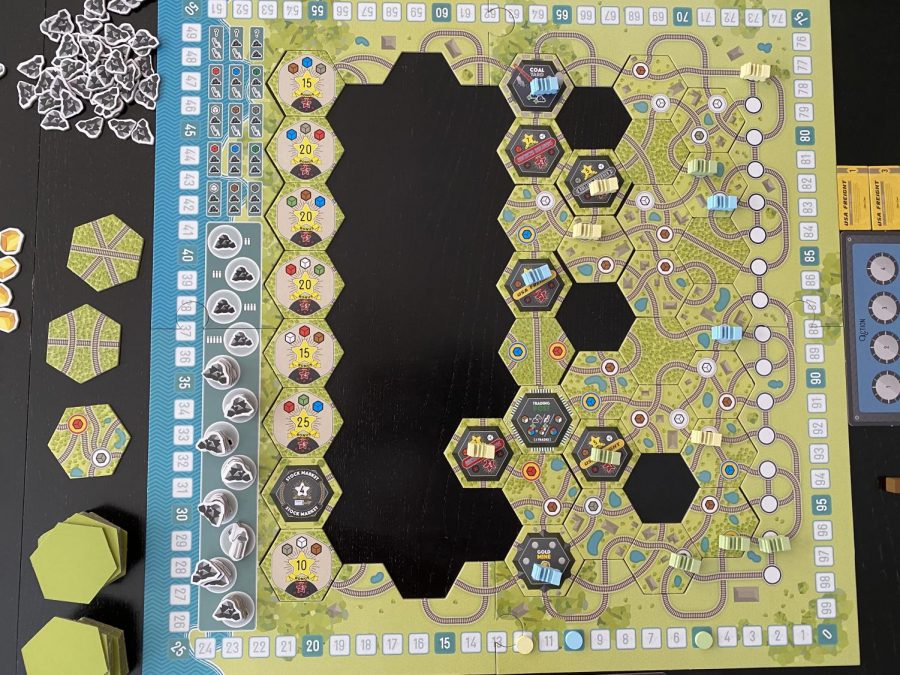
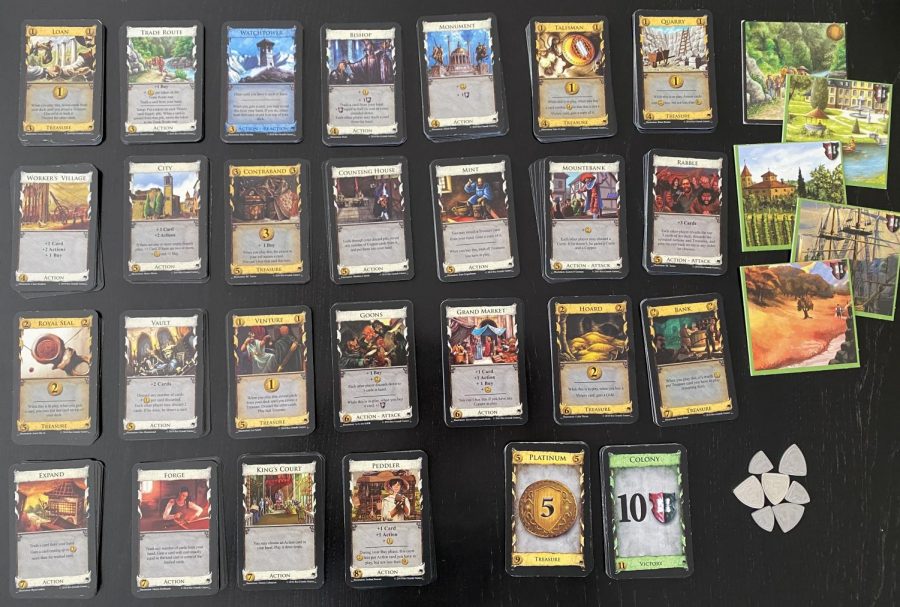


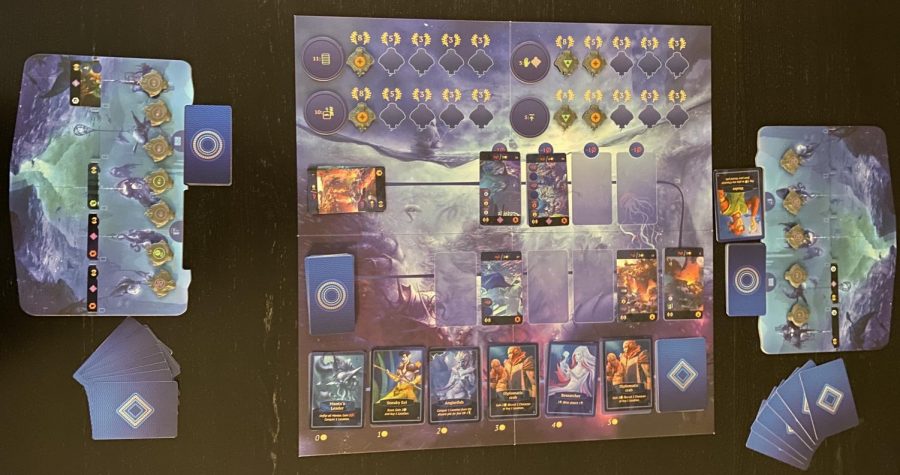
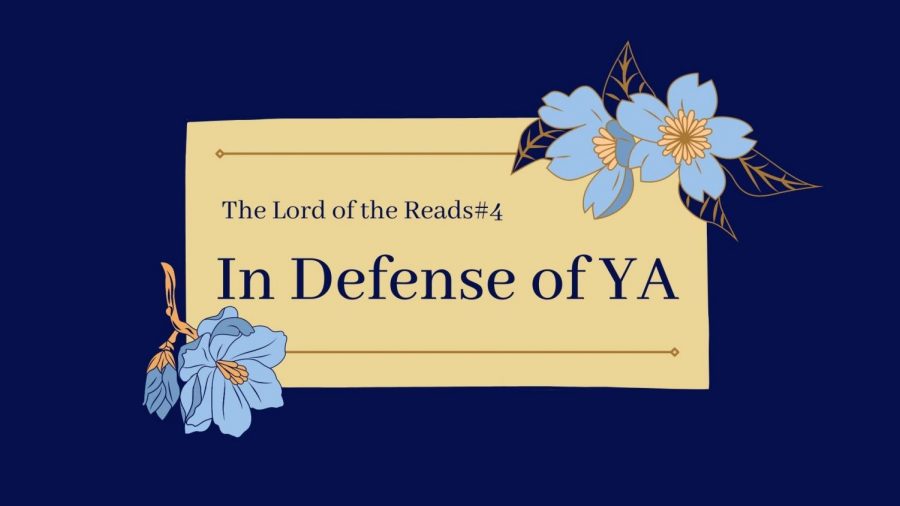
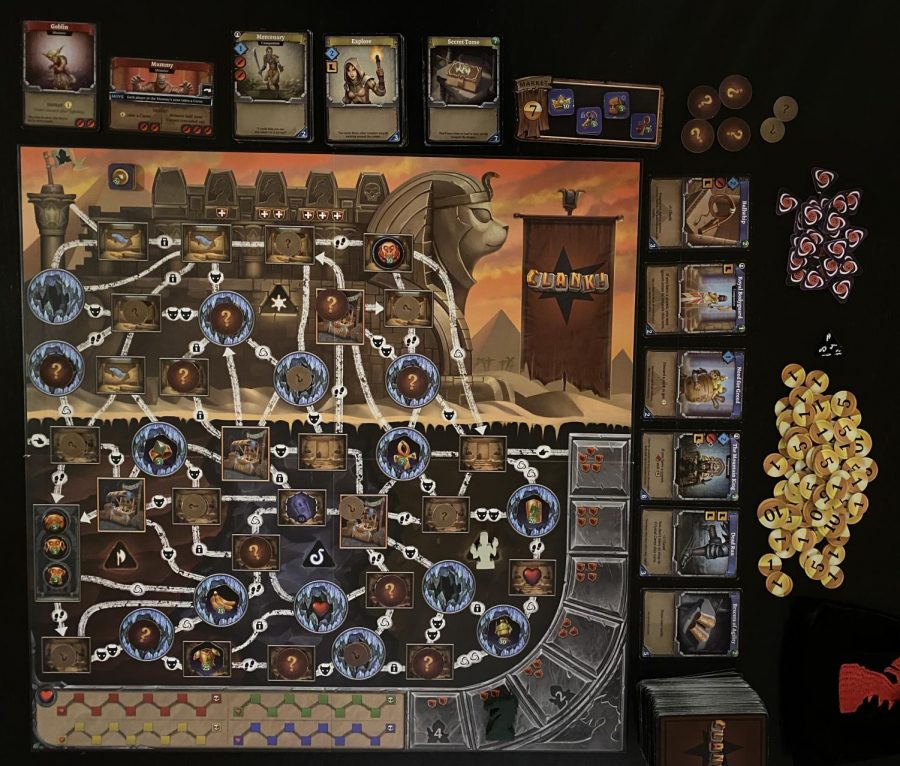
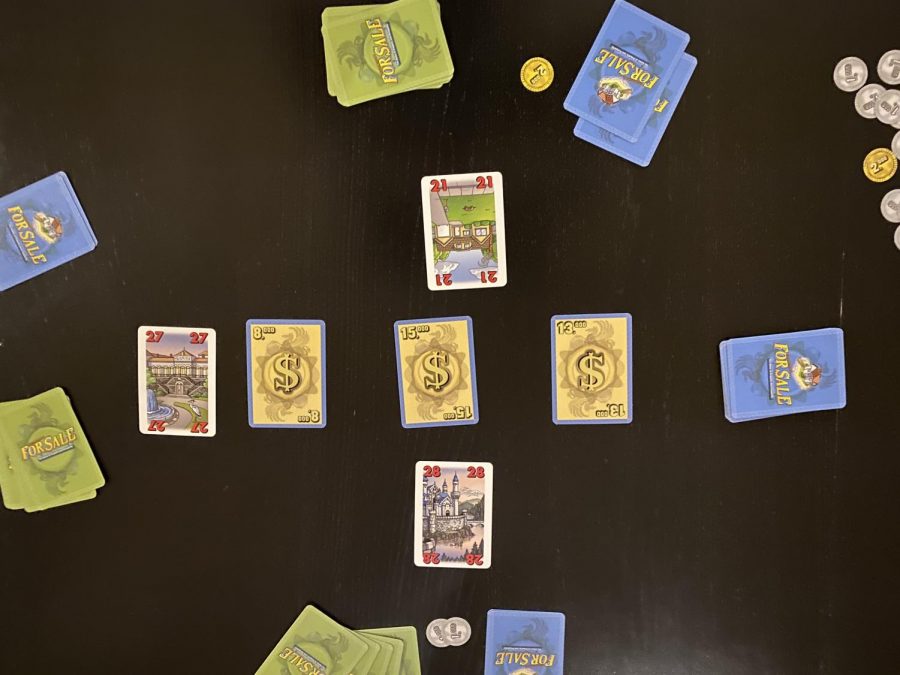
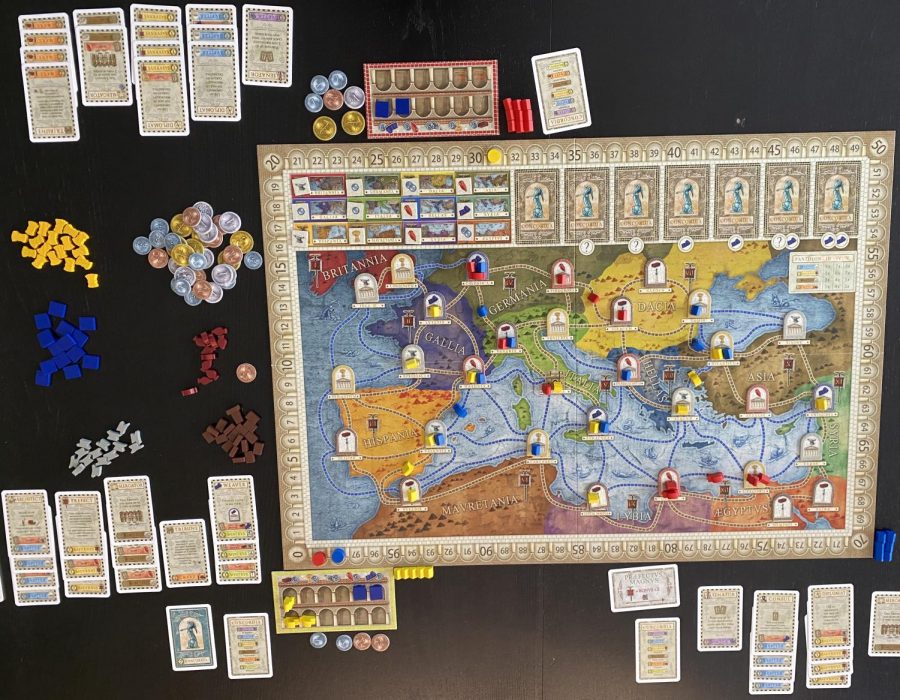











Ken STANFORD • Jul 11, 2021 at 7:34 pm
Laughable, try again